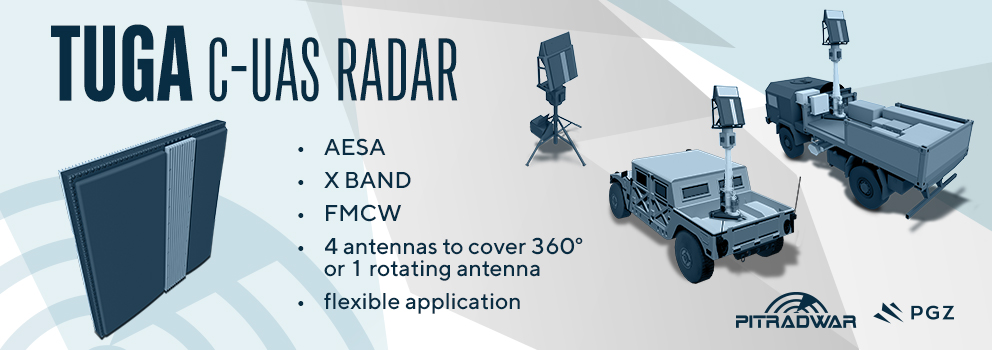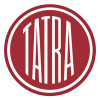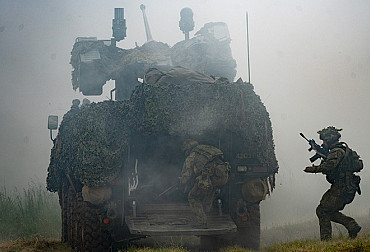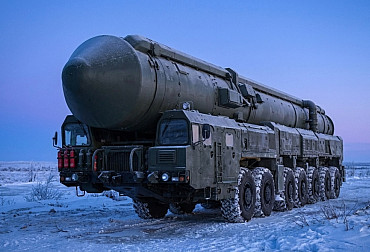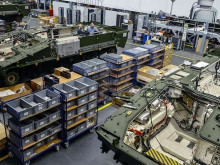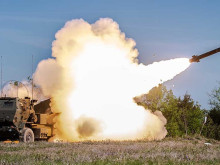The Netherlands is massively arming itself. It is purchasing new torpedoes, drones, IFVs, and rifles
The Netherlands plans to significantly increase the capabilities of its armed forces, including the navy, and has therefore decided to make a number of new military equipment acquisitions. These include anti-torpedo torpedoes, air and water drones, tracked armored vehicles, and replacements for current assault rifles. The cost of the planned projects is estimated at least €1.45 billion. The new Dutch acquisitions come at a time of uncertainty within the North Atlantic Alliance regarding the future role of the US and the associated increase in defense spending across Europe.
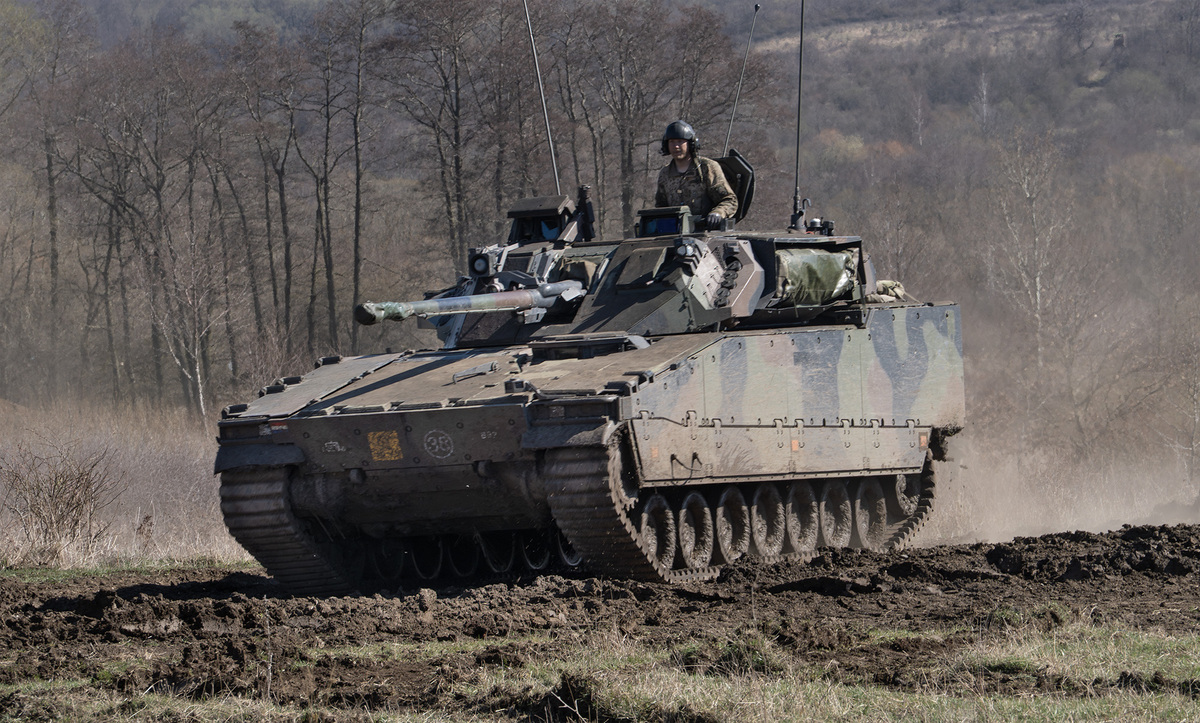
In total, there are 17 new projects spread over the next few years, worth at least €1.45 billion. The price tag was set by the Dutch Ministry of Defense based on the lower limit of the budget range for each individual acquisition, which ranges from basic equipment for soldiers, such as long-barreled weapons, to modern heavy equipment, such as tracked vehicles. "It is essential that the Ministry of Defense has the necessary defense equipment available in a timely manner to increase our deterrence and ensure that we are a reliable NATO ally. With this comprehensive 'A letter', the Ministry of Defense is taking another step towards greater flexibility and less internal bureaucracy in the public procurement process," Deputy Minister of Defense Gijs Tuinman wrote in a letter to Dutch lawmakers.
Among the projects being prepared by the Dutch Navy are equipping frigates, submarines, and new amphibious vessels with defense systems capable of neutralizing enemy missiles, including unmanned maritime vehicles. This will mainly be achieved by the Anti-Torpedo Torpedo (ATT) system, which will first be deployed on brand new frigates specializing in anti-submarine warfare (ASWF class). The Dutch Navy is expected to receive the first units by 2030. The project is being developed as part of the EU's defense policy and its Permanent Structured Cooperation (PESCO) until 2028. The first ATTs should be operational a year later. The Navy also plans to replace its existing Mark 48 submarine torpedoes, which were deployed by the United States in their original form in the 1970s. The naval domain will also be complemented by new air and, in particular, maritime drones, i.e., unmanned underwater and surface vehicles, which, in combination with advanced weapon systems, will contribute to the comprehensive protection of the fleet.
The Dutch also plan to expand their fleet of armored vehicles with several dozen CV90 tracked combat vehicles of an unspecified type, presumably from Sweden. According to military experts, these will likely be BVP configurations with a turret and a wide range of possible main gun calibers. The Dutch Ministry of Defense plans to purchase the tracked vehicles through negotiations without a tender from a single source, wanting to buy systems that are familiar to the army and have been purchased before, which is why the CV90 appears to be the most likely platform, as it is already in service with the 43rd Mechanized Brigade. "This ensures that contracts can be awarded more quickly, which also benefits the delivery time," Tuinman added in his letter to parliament, without mentioning a specific vehicle type.
Another major acquisition will be the replacement of the Colt Canada C7 and C8 assault rifles, which have been in service with the Dutch army since the 1980s. Both types are derivatives of the AR15 platform and very similar to the M4/M16 rifles, which are widely used and popular around the world. However, despite various modern accessories and improvements, these rifles have become obsolete over time. According to some analysts, the existing handguns could be replaced by the German Heckler & Koch, either the HK416 or HK443 model, but the Czech manufacturer Česká zbrojovka Uherský Brod, or rather Colt CZ Group, is also in the running with its CZ BREN 2 assault rifles. The Italian Beretta ARX160 is also being considered, and the Americans will try to sell their own rifles to the Dutch, whether it be the SIG MCX from SIG Sauer or the FN SCAR, which is an American-Belgian project. The existing Dutch rifles have been undergoing modernization since 2009 and will reach the end of their technical service life in five years.
The Netherlands has changed its defense procurement process to reduce bureaucracy and speed up the whole acquisition process. At the same time, it has doubled the value of contracts requiring notification to parliament to €50 million and increased the investment amount requiring parliamentary approval from €100 million to €250 million. "Since Russia's invasion of Ukraine in February 2022, the Ministry of Defense has taken new measures to increase flexibility, speed up processes, and reduce internal bureaucracy," Deputy Defense Minister Gijs Tuinman added, according to Defense News.
The Netherlands is increasing its defense spending, following the example of other NATO member states. The Netherlands is also one of Ukraine's largest partners and supporters among European countries and wants to continue to set an example for others within the European part of the Alliance. "I think it is most important that we do this together and create a joint plan under which (the Americans) could perhaps move some of their resources to other parts of the world and we, as European countries, could gradually take over some of these local resources," said Defense Minister Ruben Brekelmans in an interview with Euronews on the role of European partners within the Alliance.
🚨🇺🇸🇳🇱 The US State Department has approved a possible Foreign Military Sale to the Netherlands of up to 163 Tomahawk Block V All Up Rounds (AURs); 12 Tomahawk Block IV AURs; up to 10 Tactical Tomahawk Weapons Control Systems (TTWCS); and up to 2 Tomahawk Block IV telemetry… https://t.co/CeqpghGb7C pic.twitter.com/IgYoGhuif7
— Colby Badhwar 🇨🇦🇬🇧 (@ColbyBadhwar) April 25, 2025
The Netherlands met the previously mandatory defense spending target of 2% of GDP last year, but its ambitions for the future are much greater, partly due to Donald Trump's current rhetoric. He has repeatedly stated that NATO partners should contribute at least 5%. Most recently, US Secretary of Defense Pete Hegseth toyed with the idea of withdrawing US troops from Europe, where there are currently around 100,000. The Americans have not provided any further details on this possible move. However, this is far from a rift between the US and Europe – the Dutch, like other countries, continue to trade actively with the Americans, especially in the defense sector, and will continue to do so in the future. In addition to modern F-35 fighter jets, the US will also supply the Netherlands with Tomahawk cruise missiles.
